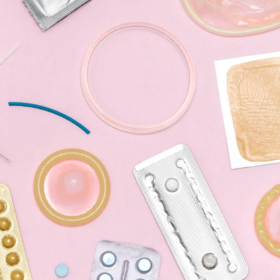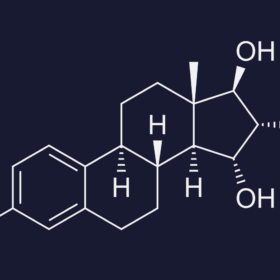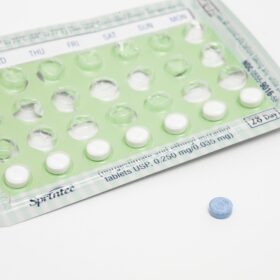
What is Ethinylestradiol and how does it Work?
In this article
What's the lowdown?
Ethinylestradiol is a synthetic oestrogen used in combined hormonal contraceptive
It can cause side effects and an increased risk of blood clots
What is Ethinylestradiol?
Ethinylestradiol is a synthetic form of oestrogen and is not body identical, so is slightly different to the oestrogen hormone that we make naturally. Ethinylestradiol is used in most brands of combined hormonal contraception, alongside a synthetic progestogen, including in the combined oral contraceptive pill, the contraceptive patch and the vaginal ring.
How does it work?
Ethinylestradiol is metabolised by the liver into estradiol (aka oestrogen), and works with the progestogen in the combined pill to stop ovulation (the release of an egg from the ovaries), stopping fertilisation of an egg by sperm and preventing pregnancy. Estradiol also regulates the lining of the womb helping to prevent breakthrough bleeding on the pill.
What is it used in?
Pretty much every combined contraceptive! Combined pill brands containing ethinylestradiol include:
| Microlite, Leonora |
| Mercilon, Gedarel 20/150, Bimizza |
| Femodette, Millinette 20/75, Sunya 20/75 |
| Eloine |
| Levest, Microgynon 30/75, Ovranette, Rigevidon, Microgynon ED Tablets, Maexeni, Ambelina, Elevin |
| Gedarel 30/150, Marvelon, Cimizt |
| Femodene, Femodene ED, Katya 30/75, Millinette 30/75 |
| Yasmin, Lucette |
| Norimin |
| Brevinor |
| Logynon |
| Cilest, Lizinna, Cilique |
| Dianette |
Commonly ethinylestradiol levonorgestrel pills are the first pills people try. These are brands such as Microgynon and Rigevidon.
Helpfully the patch and the vaginal ring only have a few brands available in the UK currently – the Evra patch, the NuvaRing and SyreniRing. These all also contain ethinylestradiol. The way the hormones are delivered in the patch or ring may have benefits for individuals over the pills.
Ethinylestradiol side effects
Possible side effects of combined hormonal contraceptive methods caused by oestrogen include:
- Bloating
- Breast tenderness or swelling
- Reduced sex drive
- Headaches
- Mood swings
- Nausea or vomiting
- Water retention
What are the risks?
Typically, synthetic oestrogen like ethinylestradiol can cause an increased risk of blood clots. Oestrogen receptors in the liver are involved in the production of blood clotting factors. Ethinylestradiol is much more potent than natural estradiol, and it remains in the body far longer, so it hyperactivates the liver pathway, creating conditions that promote blood clotting.
To decrease the risks of blood clots and other side effects, the dose of synthetic oestrogen in combined contraceptive pills has been gradually dropping over time. Blood clot risk varies slightly between different brands of combined pill, depending on the type of progestogen included. However for women who already are at an increased risk of blood clots there are other safer methods of contraception available which do not contain oestrogen. You can use our recommender to help you work this out.
Our medical review process
This article has been medically reviewed for factual and up to date information by a Lowdown doctor.






